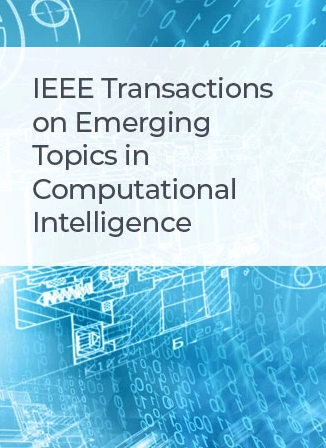MUSTER: A Multi-Scale Transformer-Based Decoder for Semantic Segmentation
IF 5.3
3区 计算机科学
Q1 COMPUTER SCIENCE, ARTIFICIAL INTELLIGENCE
IEEE Transactions on Emerging Topics in Computational Intelligence
Pub Date : 2024-09-09
DOI:10.1109/TETCI.2024.3449911
引用次数: 0
Abstract
In recent works on semantic segmentation, there has been a significant focus on designing and integrating transformer-based encoders. However, less attention has been given to transformer-based decoders. We emphasize that the decoder stage is equally vital as the encoder in achieving superior segmentation performance. It disentangles and refines high-level cues, enabling precise object boundary delineation at the pixel level. In this paper, we introduce a novel transformer-based decoder called MUSTER, which seamlessly integrates with hierarchical encoders and consistently delivers high-quality segmentation results, regardless of the encoder architecture. Furthermore, we present a variant of MUSTER that reduces FLOPS while maintaining performance. MUSTER incorporates carefully designed multi-head skip attention (MSKA) units and introduces innovative upsampling operations. The MSKA units enable the fusion of multi-scale features from the encoder and decoder, facilitating comprehensive information integration. The upsampling operation leverages encoder features to enhance object localization and surpasses traditional upsampling methods, improving mIoU (mean Intersection over Union) by 0.4% to 3.2%. On the challenging ADE20K dataset, our best model achieves a single-scale mIoU of 50.23 and a multi-scale mIoU of 51.88, which is on-par with the current state-of-the-art model. Remarkably, we achieve this while significantly reducing the number of FLOPs by 61.3%.基于多尺度变压器的语义分割解码器
在最近的语义分割工作中,有一个重要的焦点是设计和集成基于转换器的编码器。然而,基于变压器的解码器很少受到关注。我们强调,在实现优越的分割性能,解码器阶段是同样重要的编码器。它解开并细化高级线索,在像素级别实现精确的对象边界描绘。在本文中,我们介绍了一种新型的基于变压器的解码器,称为MUSTER,它与分层编码器无缝集成,无论编码器架构如何,都能始终提供高质量的分割结果。此外,我们还提出了一种可以在保持性能的同时减少FLOPS的变种。采用精心设计的多头跳跃注意(MSKA)单元,并引入创新的上采样操作。MSKA单元能够融合编码器和解码器的多尺度特征,促进全面的信息集成。上采样操作利用编码器功能来增强目标定位,超越了传统的上采样方法,将mIoU(平均交联)提高了0.4%至3.2%。在具有挑战性的ADE20K数据集上,我们的最佳模型实现了50.23的单尺度mIoU和51.88的多尺度mIoU,与目前最先进的模型相当。值得注意的是,我们在实现这一目标的同时,将flop数量显著减少了61.3%。
本文章由计算机程序翻译,如有差异,请以英文原文为准。
求助全文
约1分钟内获得全文
求助全文
来源期刊

IEEE Transactions on Emerging Topics in Computational Intelligence
Mathematics-Control and Optimization
CiteScore
10.30
自引率
7.50%
发文量
147
期刊介绍:
The IEEE Transactions on Emerging Topics in Computational Intelligence (TETCI) publishes original articles on emerging aspects of computational intelligence, including theory, applications, and surveys.
TETCI is an electronics only publication. TETCI publishes six issues per year.
Authors are encouraged to submit manuscripts in any emerging topic in computational intelligence, especially nature-inspired computing topics not covered by other IEEE Computational Intelligence Society journals. A few such illustrative examples are glial cell networks, computational neuroscience, Brain Computer Interface, ambient intelligence, non-fuzzy computing with words, artificial life, cultural learning, artificial endocrine networks, social reasoning, artificial hormone networks, computational intelligence for the IoT and Smart-X technologies.
 求助内容:
求助内容: 应助结果提醒方式:
应助结果提醒方式:


